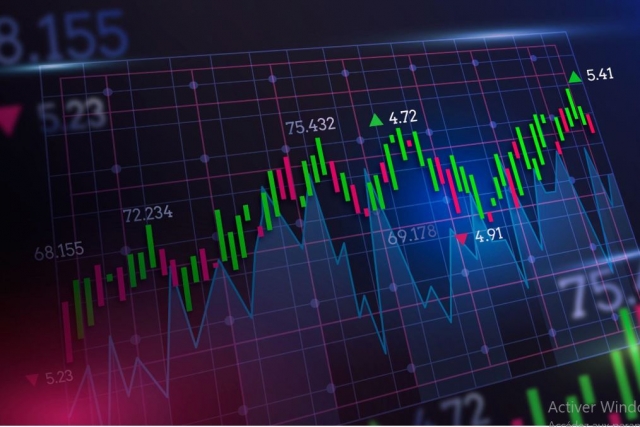In the fast-paced and ever-changing world of trading, it is essential for traders to leverage the right tools and indicators to make informed decisions. Two of the most commonly used tools in trading are the Exponential Moving Average (EMA) and the Simple Moving Average (SMA). Understanding the basics, differentiating between the two, and knowing their practical applications can significantly enhance a trader's decision-making skills.
Understanding the Basics of Trading Tools
When it comes to trading, having a solid understanding of technical analysis tools is essential. Two commonly used tools are the Exponential Moving Average (EMA) and the Simple Moving Average (SMA). Let's take a closer look at each of these indicators and how they can be used in trading strategies.
Introduction to EMA
What is EMA? The Exponential Moving Average (EMA) is a technical analysis indicator that calculates the average price of a security over a specified period. Unlike the SMA, which gives equal weightage to each data point, the EMA assigns more weightage to recent prices. This makes it more responsive to recent market movements and can be valuable for short-term trading decisions.
Traders often use the EMA to identify trends and potential entry or exit points. By focusing on recent prices, the EMA can provide a clearer picture of the current market sentiment. For example, if the EMA is trending upwards, it may indicate a bullish market, while a downward trend could suggest a bearish market.
Additionally, the EMA can be used to generate trading signals. When the price of a security crosses above the EMA, it may signal a buy opportunity, while a cross below the EMA could indicate a sell opportunity. However, it's important to note that no indicator is foolproof, and it's always recommended to use multiple indicators and analysis techniques for confirmation.
Introduction to SMA
The Simple Moving Average (SMA) is another widely used technical analysis tool in trading. It calculates the average price of a security over a specified period by averaging a set number of past data points. SMA gives equal weightage to all data points, making it suitable for long-term analysis and identifying trends.
Traders often use the SMA to smooth out price fluctuations and identify long-term trends. By averaging out the price over a specific period, the SMA provides a clearer picture of the overall market direction. For example, if the price is consistently above the SMA, it may indicate an uptrend, while a price below the SMA could suggest a downtrend.
In addition to trend identification, the SMA can also be used as a support or resistance level. Traders often observe how the price reacts when it approaches or crosses the SMA. If the price bounces off the SMA and continues in the same direction, it may indicate a strong support or resistance level.
It's worth noting that the choice between using the EMA or SMA depends on the trader's time horizon and trading strategy. Short-term traders may prefer the EMA for its responsiveness to recent market movements, while long-term traders may lean towards the SMA for its ability to identify broader trends.
In conclusion, both the EMA and SMA are valuable tools in a trader's arsenal. They can help identify trends, generate trading signals, and provide support and resistance levels. However, it's important to remember that no indicator is infallible, and it's crucial to combine technical analysis with other forms of analysis and risk management techniques for successful trading.
The Importance of EMA and SMA in Trading
Role of EMA in Trading
EMA is particularly useful for traders who want to identify the trend's direction and potential reversal points. By placing more weightage on recent prices, EMA reacts faster to price changes, making it effective in volatile markets. Traders often use EMA crossovers, where the shorter EMA crosses above or below the longer EMA, as a signal for potential buy or sell opportunities.
Role of SMA in Trading
SMA, on the other hand, is crucial for long-term trend analysis. It smoothes out price fluctuations over a specified period, making it easier to identify long-term trends and market cycles. Traders also use SMA crossovers, such as the 50-day SMA crossing above the 200-day SMA, as an indication of a long-term bullish trend.
Differentiating Between EMA and SMA
Key Differences in Calculation
One of the fundamental differences between EMA and SMA lies in their calculation methods. EMA places more weightage on recent prices, using a formula that gives more significance to the latest data points. In contrast, SMA calculates the average price by equally weighing all data points within the specified period. This means that SMA tends to lag behind price movements compared to EMA.
Differences in Sensitivity and Signals
Another key distinction between EMA and SMA is their sensitivity to price changes. Due to its calculation method, EMA reacts faster to recent price movements, making it more sensitive to short-term fluctuations. On the other hand, SMA, with its equal weighting approach, is less influenced by short-term price swings, offering a more stable indication of longer-term trends.
Practical Applications of EMA and SMA in Trading
Using EMA for Short-Term Trading Decisions
Traders often rely on EMA to identify short-term trends and potential entry or exit points in the market. By combining different EMA periods, such as the 9-day EMA and the 21-day EMA, traders can generate trading signals. For example, a bullish signal occurs when the shorter EMA crosses above the longer EMA, indicating a potential buying opportunity.
Using SMA for Long-Term Trading Decisions
SMA is particularly useful for long-term traders who focus on overall market trends. By analyzing the crossover of different SMA periods, traders can identify long-term opportunities. For instance, when the short-term SMA crosses above the long-term SMA, it suggests an uptrend, signaling a potential buying opportunity for a longer-term investment.
Advantages and Disadvantages of EMA and SMA
Pros and Cons of EMA
EMA's main advantage lies in its responsiveness to recent price changes, making it suitable for short-term trading decisions. However, its sensitivity to price swings can also lead to increased false signals in choppy or sideways markets. Traders should consider combining EMA with other indicators for confirmation.
Pros and Cons of SMA
SMA's primary advantage is its ability to smooth out price fluctuations and provide a clearer picture of long-term trends. It is less reactive to short-term market noise, but this attribute can result in delayed signals. Traders should consider using SMA in conjunction with other technical indicators and tools for comprehensive analysis.
In conclusion, understanding the differentiating features and practical applications of EMA and SMA can significantly enhance a trader's decision-making process. Both tools offer unique advantages and disadvantages, catering to different trading styles and time horizons. By combining these tools with other indicators and market analysis techniques, traders can develop a holistic trading strategy that optimizes their chances of success in the dynamic world of trading.






